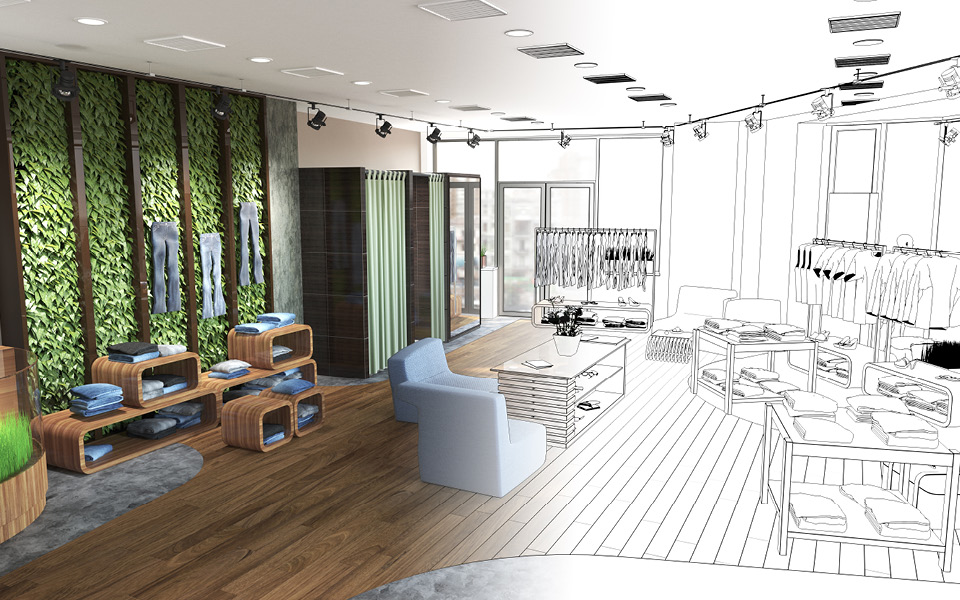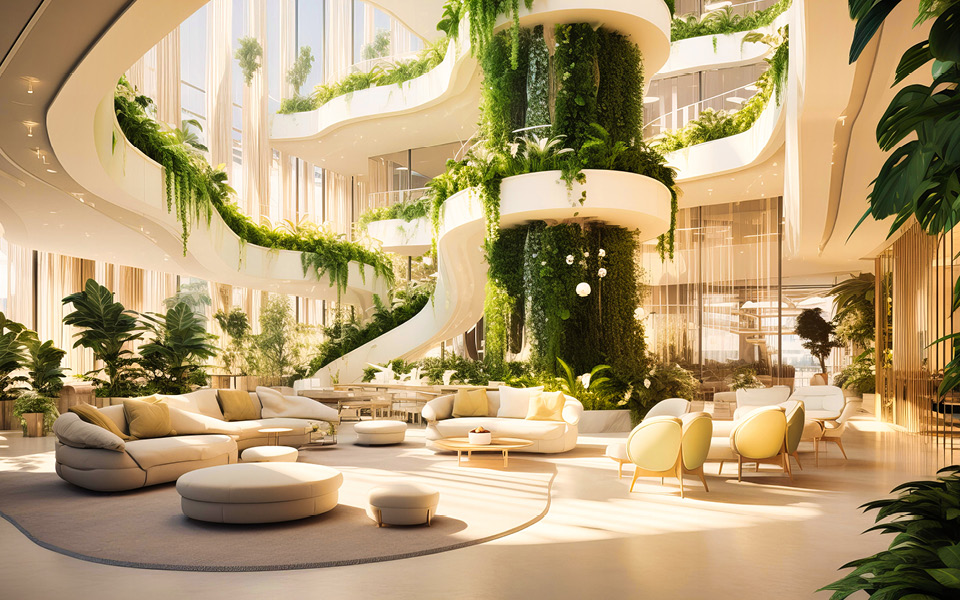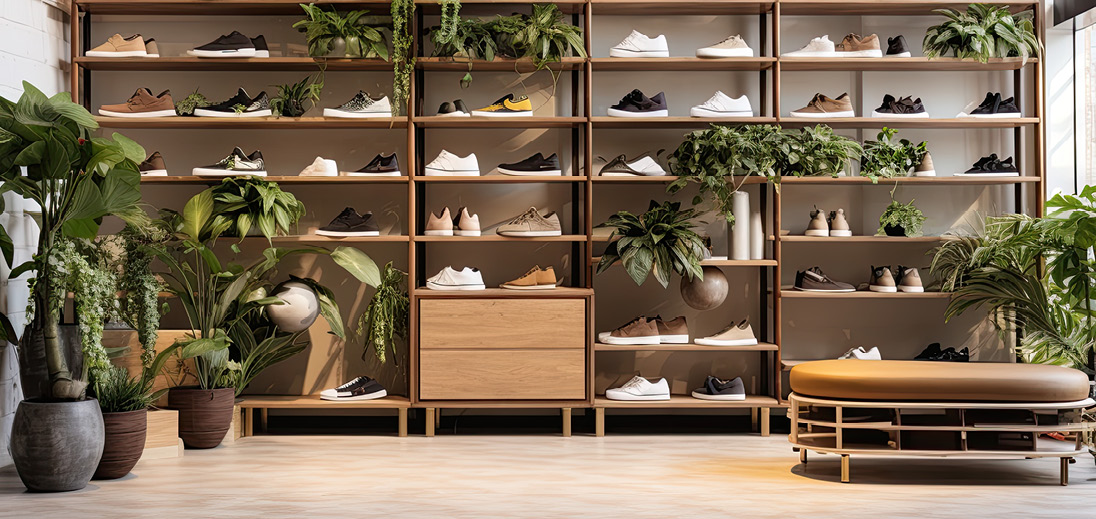The best ways to craft a more eco-responsible retail space
73% of customers want to reduce their environmental impact, while 58% prefer brands that source ethical services and materials. Those figures indicate that designing a sustainable retail space has become a must.
73% of customers want to reduce their environmental impact, while 58% prefer brands that source ethical services and materials. Those figures indicate that designing a sustainable retail space has become a must.
Sustainable design: a new challenge for retailers
Retailers have a pivotal role to play in building a sustainable future. As the ultimate link between consumers and the whole supply chain, they can lead the way in environmental responsibility. And they have many levers to do so. At the core of their business model, retailers can choose suppliers and source materials based on sustainability criteria. To embody their commitment, they can design an eco-responsible commercial space.
Indeed, more and more customers expect brands to commit to sustainable practices at every step. Gen Z and Millenials are the most eco-conscious generations. They know everything has an environmental impact: what they buy, where they shop, how long they use a product, etc. Most of them favour brands that take action for a better future. To match these expectations and remain competitive, retailers must take the leap.

Crafting a sustainable retail space is also beneficial for profitability since it reduces costs. At first glance, you think about furniture, materials, and decoration. But becoming a sustainable retailer also includes better energy consumption, insulation work, waste management, and upcycling. As a designer or creative, your job is to use visual communication to guide the customer through their buying journey. Here are some starting points to design sustainable shops.
Imagine a sustainable retail space from the start
Conceiving an eco-responsible retail store begins with a well-thought-out design. A great example is IKEA and their Greenwich London store that opened in 2019. They designed everything with sustainability in mind. First, they picked a location close to public transport for lower-carbon trips. Second, they built the structure with renewable materials. Third, they added solar panels to make the outlet energy self-sufficient. IKEA is a pioneer in designing the entire customer experience, creating hubs where people can spend quality time together.
In this idea of reshaping spaces, more and more retail space designers use modular systems instead of a fixed setup. This way, stores are flexible and easy to reconfigure at any time.

How about the materials and furniture to fit out your shop? Selecting organic elements is crucial to designing a sustainable venue. If you invest in wood, ensure it’s FSC-certified, which means it comes from an ethically harvested forest. Other sustainable materials are bamboo, cork, natural stone, aluminum, and recycled glass. Feel free to experiment with new materials made from algae, mycelium, or recycled plastic. That’s an opportunity to tell the stories behind these materials and how they are beneficial. You can do it through in-store display boards and other visual communication solutions.
Natural lighting is another way of making your retail space more sustainable. First of all, artificial lighting weighs more than a third of the energy budget of a store. Besides being free, daylight makes the shopping experience more pleasant and it boosts sales. In addition to natural light, prefer LED lighting over traditional bulbs.
You’ve probably heard of circular retail design. It is a growing trend that goes from sustainable packaging to reused materials for products, including care and repair services. H&M and Zara are good examples of using waste as a resource. They have in-store bins or repair stations to collect old and damaged clothing. Then, they recycle or donate these clothes to contribute to social projects led by non-profit organisations. The circle is complete and the material resources return to the system. The circular design takes its inspiration from nature and that’s a perfect transition to our last part.
Bring nature into the shop and take it to the next level
We already mentioned the importance of using organic materials and opening the retail space to natural light. However, there are countless other ways to introduce nature in any store.
Have you heard about biophilic design? Biophilia is the inborn affinity that we, human beings, have for nature. Biophilic design aims to reestablish the connection between people and the natural world. Being surrounded by plants reduces stress, enhances well-being, and stimulates creativity and productivity.

Biophilic design in retail involves introducing plants, creating spaces inspired by the wild, and using materials and shapes that mimic natural forms. This approach improves the shopping experience and aligns with the increasing consumer demand for nature-connected areas. Add objects with organic colors. Source materials from the local biodiversity. How about creating a living wall? There are endless possibilities to make a retail space come alive.
- - -
Customers have already switched their shopping habits in favour of brands that are adopting sustainable practices. Sustainability challenges will keep defining and influencing retail design trends. Antalis provides sustainable alternative solutions for in-store visual communication, decoration, and shop fitting.
*Source: Why retail design needs to incorporate sustainable materials and embrace ‘reuse’ as a design tool - Sheridan&Co
**Source: Generation P(urpose): From Fidelity To Future Value







